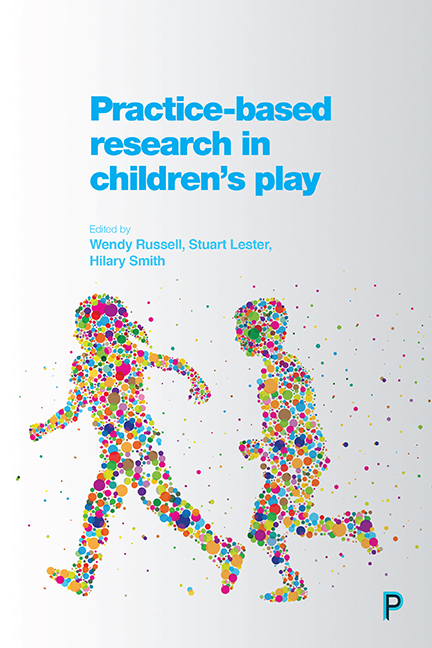Book contents
- Frontmatter
- Contents
- List of figures
- Notes on contributors
- Acknowledgements
- Foreword
- One Perspectives on play research: the practice-theory-research entanglement
- Part One Then and now: historical perspectives
- Part Two Here and there, this and that: spatial and creative perspectives
- Part Three Playfulness and wellbeing
- Closing thoughts
- Appendix: The Playwork Principles
- Index
Six - Researching children’s play and contemporary art
Published online by Cambridge University Press: 05 April 2022
- Frontmatter
- Contents
- List of figures
- Notes on contributors
- Acknowledgements
- Foreword
- One Perspectives on play research: the practice-theory-research entanglement
- Part One Then and now: historical perspectives
- Part Two Here and there, this and that: spatial and creative perspectives
- Part Three Playfulness and wellbeing
- Closing thoughts
- Appendix: The Playwork Principles
- Index
Summary
Introduction
Thirty years into a significant body of work that defined what is now known as performance art, the artist Alan Kaprow wrote:
Suppose that performance artists were to adopt the emphasis of universities and think tanks based on basic research. Performance would be conceived as inquiry…The artist as researcher can begin to consider and act upon substantive questions about consciousness, communication and culture without giving up membership in the profession of art. (Kaprow, 1993, p 177)
In 2008, Kaprow's work in artfully articulating meaningful experiences from ordinary life would inspire the development of The New Children's Museum, in San Diego, California, a space that will act as a test site of research methodologies reviewed in this chapter. Neither a children's museum nor a standard contemporary art museum, The New Children's Museum engages with contemporary artists to develop and install playful artworks for an audience of children and adults. Practitioners in such a hybrid space need tools that can go beyond the ‘thick description’ (Geertz, 1994) of ethnographic and positivist research positions: an approach that is closer to Kaprow's notion of the artist as researcher and inquiry perceived as performance may be of considerable value in this toolbox.
This review assembles examples of alternative research methodologies, drawn from diverse practices such as performance studies and performance art, and considers their value in mapping the complexities presented by a children's museum that also actively engages in the production of contemporary art. It may also have wider appeal for practitioners engaged in supporting children's creative and playful expressions in a variety of contexts. Understanding this hybrid museum requires research methods that emphasise diversity of experience, situated knowledge and the idea that the scientific method is just one method among many for understanding the world. It is a shift from just ‘what’ research explores to ‘how’ we undertake that research. It seeks a method of creative research and evaluation emphasising the experience of the moment that leads to the end-product, not only the end-product itself. Note that the central intent of such research is not to measure impact, although that certainly may become a bi-product of such research.
- Type
- Chapter
- Information
- Practice-Based Research in Children's Play , pp. 95 - 112Publisher: Bristol University PressPrint publication year: 2017



